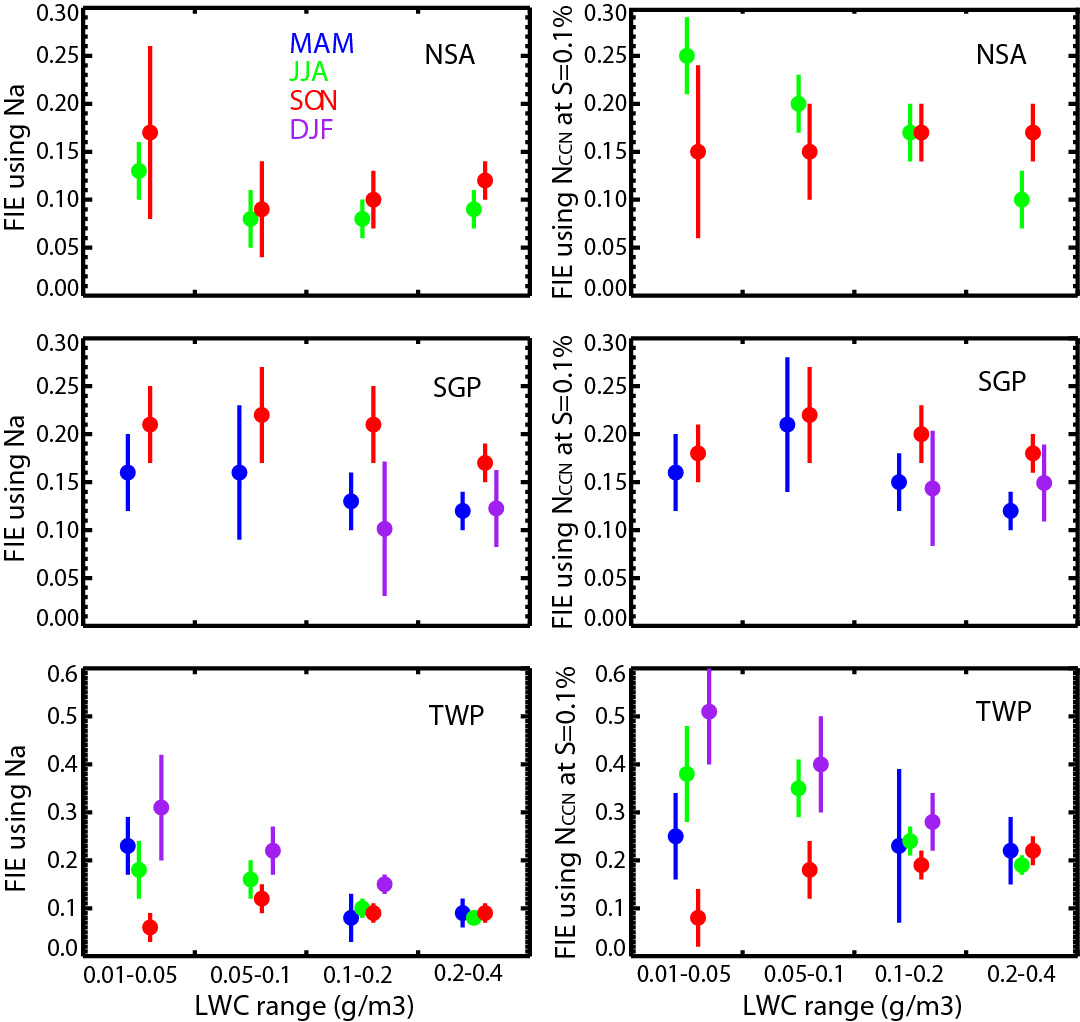CAM5 Shows Reasonable Aerosol First Indirect Effects on Non-Precipitating Low Liquid Clouds
Submitter:
Zhao, Chuanfeng — Beijing Normal University
Klein, Stephen — Lawrence Livermore National Laboratory
Area of research:
Cloud-Aerosol-Precipitation Interactions
Journal Reference:
Science
The Intergovernmental Panel on Climate Change (IPCC) listed the indirect effects of aerosols on climate change as one of the largest uncertainties in current climate models. Evaluating distinct components such as the first indirect effect can help identify where problems occur and where model representations are more robust, and can thus lead to a narrowing of this uncertainty. This study achieves this identification of strengths (first indirect effect) and potential weaknesses (other indirect effects) in Community Atmospheric Model Version 5 (CAM5) by taking advantage of process-level data and comparing these directly to CAM5 model output.
Impact
The study examines the aerosol first indirect effects (FIE) for non-precipitating low-level single-layer liquid phase clouds simulated by CAM5 at three DOE Atmospheric Radiation Measurement (ARM) Climate Research Facility sites. CAM5 runs in a forecast mode with the Cloud-Associated Parameterizations Testbed (CAPT). The study quantifies FIE in terms of a relative change in cloud droplet effective radius for a relative change in aerosol amount of fixed liquid water content (LWC). It uses profiles of aerosol and cloud properties simulated from the modal aerosol module (MAM) and two-moment cloud microphysics scheme in CAM5. The study shows that CAM5 simulates statistically significant aerosol first indirect effects with values between 0.05 and 0.25 for examined clouds and locations (e.g., Figure 1). It also shows that simulated FIE is generally larger for using cloud condensation nuclei (CCN) than for using aerosol accumulation mode number concentration (Na), and generally decreases with LWC at ARM coastal sites (Figure 2). Moreover, FIE shows weak sensitivity to examined location and time (Figure 2). All of these findings are consistent with numerous observational studies, particularly those long-term observations at examined locations.
Summary
All the results shown in this study suggest reasonable CAM5 simulations in aerosol first indirect effects for the examined cloud type at selected locations. If this study has general applicability for the FIE in other cloud types and locations, it suggests the overestimation of aerosol indirect effects in CAM5 found by other studies may be a problem from other indirect effects (second or semi) rather than FIE.



